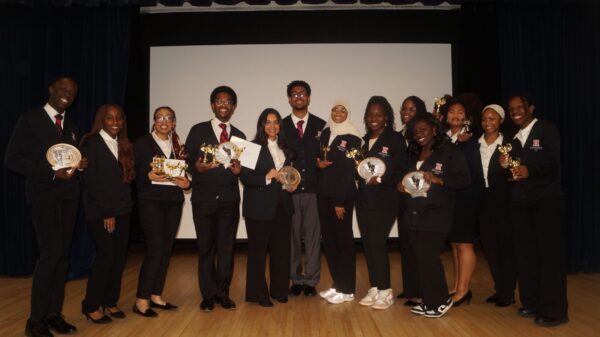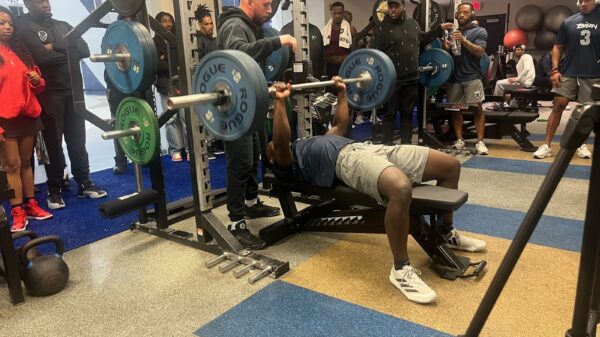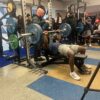
At the most recent Federal Open Market Committee (FOMC) meeting, economic activity seems to have been expanding at a solid pace. Despite the speculation on an unfavorable outlook, the U.S. economy has remained strong by the numbers.
Dr. Gerald Daniels, an associate professor of economics and associate director of undergraduate studies in the Department of Economics at Howard, is familiar with the current economic climate.
He believes the inflation rate “seems to be under control and it will be interesting to see how we continue to tackle inflation.” With the current inflation rate at 3.67 percent, the FOMC seeks to achieve maximum employment and inflation at the rate of 2 percent over the long run.
When discussing whether a recession is imminent, Daniels said that it is “difficult to say right now. The labor markets are still relatively healthy and the Fed still seems to be confident in a soft landing.” Last Wednesday, at their latest meeting, The Federal Reserve, known commonly as the Fed, decided to not further increase the federal funds rate, the interest rate that banks charge other banks to lend to each other and maintain it at a target range of 5.25 percent to 5.5 percent.
The current situation has proven to be different from previous pre-recessionary cycles due to several external factors. Much has changed compared to where we were pre-pandemic versus post-pandemic.
According to the Pew Research Center, about 35 percent of workers with jobs that can be done remotely are working from home all the time, which is up from 7 percent before the pandemic. Daniels said, “The workforce has changed substantially and immigration policies have been rather unique over the past couple of years.”
The supply chain woes that had been created by the pandemic are beginning to recover as well. Dr. Karthik Balasubramanian, an assistant professor in the Department of Information Systems & Supply Chain Management within the School of Business, spoke on how our economy has been affected by supplier methods around the globe.
“Prior to the pandemic there was a shift to ‘Just in Time’ manufacturing, where suppliers and retailers would only buy the bare minimum of inventory,” Balasubramanian said. This production model focused more on meeting demand in order to increase efficiency and reduce costs. In doing so, items were not created in surplus.
But when a once-in-a-lifetime halt in production occurs with no plan in place, demand will quickly outpace supply on an astronomical level. Companies were forced to transition into a different method of preparation called “buffer stock,” where they have been overcorrecting for a lack of supply.
Although those external pressures are beginning to lighten up, there are other factors in play that continue to affect us. Geopolitical conflicts like the Russo-Ukrainian War continue to negatively impact the economy. “Events like these will have an effect on food prices and oil prices globally,” Balasubramanian said.
Per the latest Consumer Price Index (CPI) report published earlier this month, the ‘all items’ index increased 3.7 percent over the last 12 months. The food index in particular increased 4.3 percent over the past year. This economic metric is based on the price that consumers pay for goods and services. An increase in CPI indicates that inflation is being driven higher. We see these changes reflected in our day-to-day spending on core necessities.
These external components continue to show how our economic activity can be slowed. “It feels like all of my basic needs have been so costly,” Talisha Terry, a junior human development major from Richmond, Virginia, said. “Even when trying to avoid eating out, I still end up paying a ton for groceries.”
Madison Alston, a junior marketing major at Howard University from Elkridge, Maryland, shared her perspective on how her views of the economy have changed over time and how she is affected by it now as an active college student. “Everything feels so expensive and the cost of living has drastically changed from when we were growing up,” she said.
Masene Stimely, a junior human development major from Linthicum, Maryland, felt similarly. “I never would’ve thought public transportation would’ve gotten to this point.”
Upcoming generations have felt a pinch that’s beginning to become independent and entering the workforce that differentiates from past generations. But they’re still noting the positive.
“Although times have changed since we were younger, we see a lot more people wanting to start their own businesses, especially at Howard,” Alston said. “It’s inspiring to see our generation pushing to create our own generational wealth.”
Copy edited by Alana Matthew























